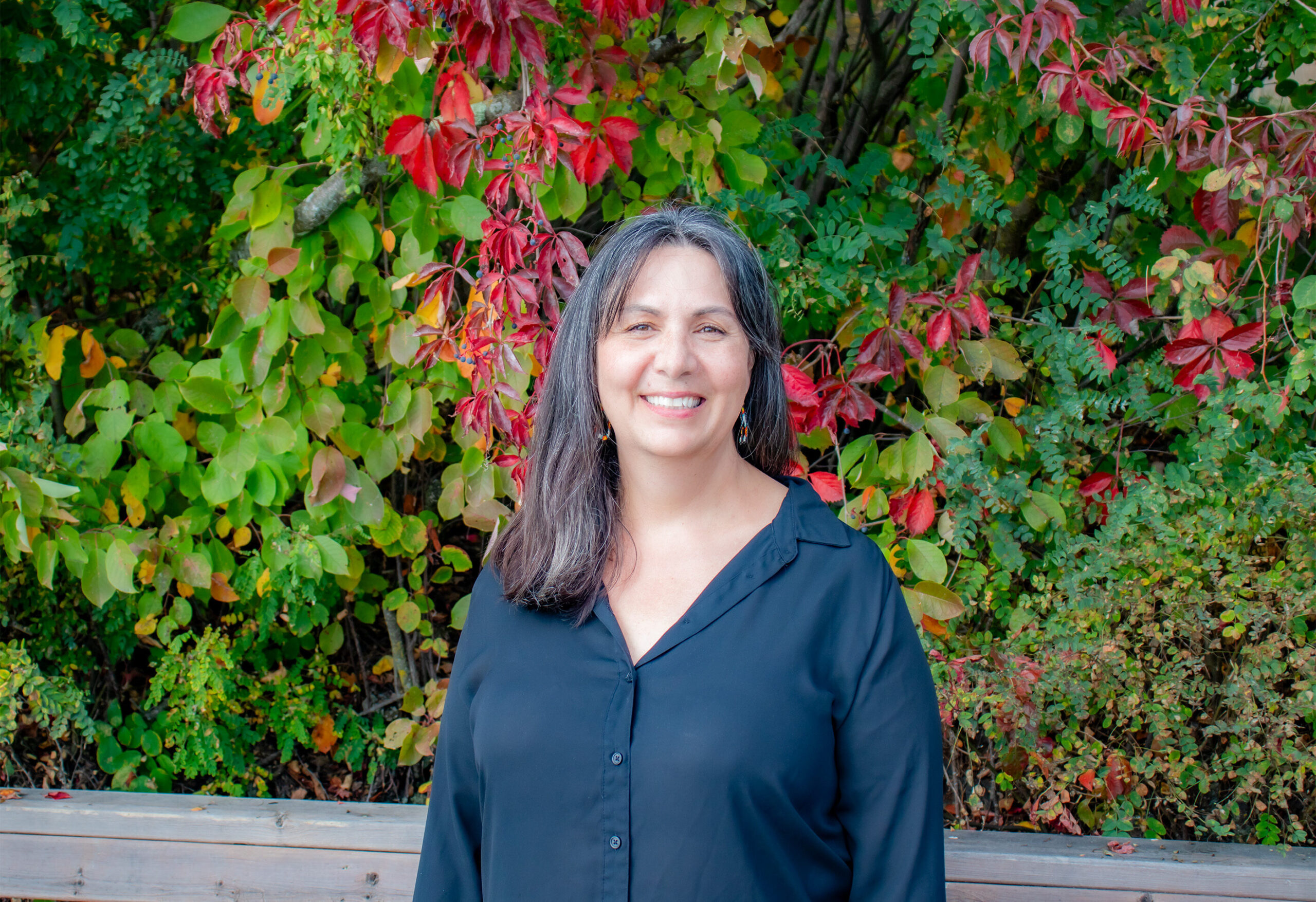Meet Bobbi Derkson, a Site Administrative Coordinator Who Connects Learners to Community in Kenora
Posted on October 29, 2025
Site Administrative Coordinators (SACs) are vital to NOSM University, ensuring medical learners not only succeed during their placements, but thrive in the Northern communities where they learn. In Kenora, Bobbi Derkson is doing just that, and much more.
A Kenora resident for over twenty years, Derkson is more than a site administrator. She’s a mentor, cultural guide, and community connector, with deep roots in both the community and the health-care world.
“I make sure our students feel supported and welcome,” says Derkson. “My favourite part of my job is when a student rushes into my office, excited to share something new they’ve discovered. Seeing them return again and again, that’s the best thing.”
A SAC’s involvement begins long before learners arrive in the community—managing everything from confirming placements and coordinating housing, to setting up credentials. Once learners are in the community, the SAC handles everything from logistics to emotional support. This helps learners have a smooth start in the hospital and the community.
“If students arrive by bus and need groceries, I usually pick them up and help them with that first big shopping trip for groceries,” Derkson says. “After that, they meet other students and find rides, but usually that first trip is with me.”
Derkson even takes care of the practical details, securing learners’ hospital badges, parking passes, and ensuring access to bicycles, kayaks, and canoes for use during downtime.
An orientation week includes tours of the hospital and local organizations. Introducing learners to the community and culture takes on a special importance in Kenora, Derkson believes.
“Kenora has a very large First Nations population and there are several First Nations communities nearby,” Derkson explains. “I try to teach students some Anishinaabe words and sayings. I print the words off and post them in the student lounge to assist learners with hearing and reading the language. I also invite them to a Sweat Lodge. We introduce students to Traditional Medicine and Cedar Baths, and I keep ribbon skirts in the student lounge in case they want to go to ceremony, or a sweat or Pow Wow. This year we attended a Pow Wow during Orientation Week.”
Derkson knows her work contributes to retention and connecting visiting learners with the community. “Officially, I’m not a recruiter—but in many ways, that’s exactly what I’m doing,” Derkson says. “We hope that students have a good experience here. That’s part of why I do what I do. My goal is to help people feel rooted and connected in the community, so they have a positive experience and consider returning.”
Still, there are challenges, especially when it comes to infrastructure and transportation. “One issue that is challenging here is housing,” Derkson says. “And there are no flights to Kenora anymore. People fly to Winnipeg and then drive two hours. Renting a car has become so expensive that some programs won’t cover car rentals for our locum doctors.”
When learners arrive in a community, they bring energy, skills, and a willingness to contribute that extends far beyond the hospital walls. The impact can be felt across the community. “We had a student who coached the high school football team,” Derkson says. “Seeing that kind of community integration is really rewarding.”
Ultimately, Derkson is optimistic about the future of health education in the region. She is supporting systemic change through the development of a rural generalist model by All Nations Health Partners, which aims to provide all physicians with one schedule, alleviating many of the challenges that arise when balancing learners’ schedules.
For those considering a role like Derkson’s, she doesn’t sugarcoat it: “This is not a Monday-to-Friday, 8 a.m. to 4 p.m. job. Students will call you at night and they’ll need help on the weekends. But it’s an extremely rewarding job. I love the students.”
“What can a placement in Kenora offer? I always say our hospital is small, but mighty,” says Derkson. “I’ve lived in Kenora for 20 years, and whenever I get the opportunity, I ensure the community knows about the medical students who come here.”
What brings Derkson the most joy, she says, is seeing learners return to the North as practicing professionals.
SACs across Northern Ontario share Derkson’s dedication, passion, and deep understanding of what it means to learn and serve in the North. They work to exemplify the heart of NOSM University’s mission: to grow and support health professionals who are ready, resilient, and deeply rooted in the communities they serve.
A big thank-you to NOSM University SACs in Bracebridge, Dryden, Elliot Lake, Fort Frances, Hearst, Huntsville, Kapuskasing, Kenora, Manitoulin Island, Midland, North Bay, Parry Sound, Sault Ste. Marie, Sioux Lookout, Sudbury, Temiskaming Shores, Thunder Bay, Timmins, and West Nipissing.


